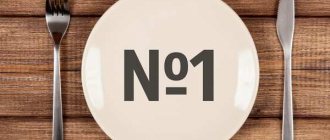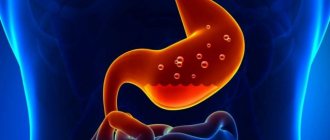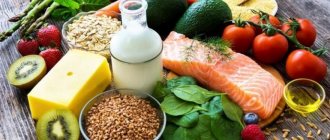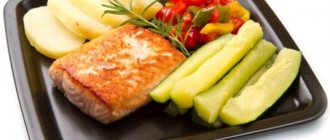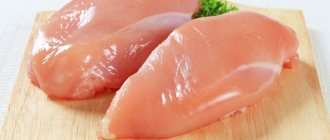Gastritis is an extremely common disease that occurs at any age. Most often, the first attack of the disease occurs in youth, for example, after prolonged stress or a serious diet disorder. This is acute gastritis. Even if treated on time, it often becomes chronic, because there are too many provoking factors in the life of a modern person.
There are many types of the disease, among them erosive gastritis. Treatment and diet are two conditions that must be observed for acute and chronic gastritis. You cannot break the rules of nutrition even in the remission phase, so that the exacerbation stage occurs as rarely as possible. The patient should write down his menu by day for the week, this will make it easier not to go beyond the diet and follow all the doctor’s recommendations.
In the first days of an exacerbation, the menu is quite meager, but you cannot expand it on your own, as this will negate the effect of the medications. Then the number of recipes for permitted dishes increases, and gradually the patient returns to a normal diet.
Table of contents
- Types of erosive gastritis and their features
- Principles of treatment
- How to eat properly and what diet is indicated for erosive gastritis What not to eat
- What can you eat
- Diet for erosive gastritis in the acute stage
- Nutrition for anemia
Details about the weekly diet
It is best if the diet for erosive gastritis of the stomach is prescribed for each day by a specialist. Thus, the patient will not be able to eat a prohibited product or exceed the serving size. Let's look at the menu for erosive gastritis of the stomach for a week with recipes.
Monday
- Breakfast: boiled chicken eggs (2 pcs.), a weak tea drink and a few white bread crackers;
- Snack: banana, mashed;
- Lunch: pureed celery soup, boiled chicken meatballs, rosehip broth and a few crackers;
- Snack: berry mousse;
- Dinner: boiled potatoes and fish fillet;
- 2 hours before bedtime: a glass of low-fat kefir.
Tuesday
- Breakfast: thin oatmeal with honey, chamomile tea;
- Snack: jelly and biscuits;
- Lunch: liquid soup of potatoes and cereals without frying, fish cutlet and fruit drink;
- Snack: fruit soufflé;
- Dinner: meat stew in the form of puree;
- 2 hours before bed: yogurt.
Wednesday
- Breakfast: rice pudding, compote;
- Snack: sweet apple;
- Lunch: beetroot soup, boiled potatoes with chicken cutlets, weak tea drink;
- Snack: biscuits;
- Dinner: boiled vegetables in the form of puree and boiled fish, a decoction of herbs and crackers;
- 2 hours before bedtime: weak tea with milk.
Thursday
- Breakfast: cottage cheese cutlets, weak tea;
- Snack: watermelon;
- Lunch: vegetable soup and chicken soufflé, croutons and compote;
- Snack: sweet pear;
- Dinner: thin rice porridge and chicken liver soufflé, herbal decoction;
- 2 hours before bedtime: warm skim milk.
Friday
- Breakfast: omelet with milk and two egg whites, berry jelly;
- Snack: baked apple;
- Lunch: kharcho soup without frying, baked and chopped chicken fillet, boiled potatoes, compote;
- Snack: dried apricots 100 g;
- Dinner: buckwheat with vegetables, crackers and weak chamomile tea;
- 2 hours before bedtime: fermented baked milk.
Saturday
- Breakfast: casserole of berries and cottage cheese, tea;
- Snack: yogurt;
- Lunch: vegetarian vegetable soup, rabbit cutlet, boiled rice, compote;
- Snack: cottage cheese;
- Dinner: boiled vegetables and fish, herbal decoction;
- 2 hours before bedtime: kefir.
Sunday
- Breakfast: lazy dumplings with low-fat yogurt, compote;
- Snack: dried apricots 100 g;
- Lunch: cereal soup, boiled fish and tea with crackers;
- Snack: berry soufflé;
- Dinner: minced rabbit pilaf, tea with milk;
- 2 hours before bed: yogurt.
By adhering to such a strict therapeutic diet, you can significantly improve your condition and achieve sustainable remission. Breakdowns and overeating should not be allowed. You should carefully monitor the consistency and temperature of the dish.
Types of erosive gastritis and their features
Erosive gastritis is divided into several subtypes. Depending on which of them is diagnosed, the doctor recommends an individual diet for erosive gastritis of the stomach.
Types of disease according to current:
- spicy;
- chronic - in the period of exacerbation or in remission.
Classification of erosive gastritis according to morphological characteristics:
- erosive-hemorrhagic;
- erosive-ulcerative;
- atrophic.
Acute inflammation of the gastric mucosa occurs due to poisoning, improper fasting, or consumption of food that is unusual for a person, coarse or overly seasoned.
Gastritis becomes chronic if the symptoms have been eliminated, but the disease is not completely cured, or with the continued action of provoking factors.
The erosive-hemorrhagic process is characterized by the presence of erosions on the walls of the stomach that periodically bleed. Erosive-ulcerative - a similar type, but without bleeding. Antral gastritis is observed in the outlet section of the stomach, most often associated with the persistence of Helicobacter pylori.
Atrophic gastritis is characterized by the loss of normal cells in the gastric mucosa. The disease may in rare cases be accompanied by high acidity or, more often, low acidity. In all cases, in addition to drug treatment, the patient requires special nutrition. The menu is developed depending on whether the disease is in an acute, subacute stage or has already entered remission.
Principles of treatment
If the diagnosis of gastritis is confirmed by instrumental studies and laboratory test results, treatment with medications is necessary. Various drugs are used until the acute attack is over and the disease goes into stable remission.
If the bacterium Helicobacter pylori is detected, antibiotics are used; if there is increased synthesis of hydrochloric acid, antacids are used (Rennie, Almagel), and Mezim and Festal are prescribed to improve digestion. To protect the gastric mucosa, De-nol is prescribed.
When treating chronic erosive antral gastritis, it is imperative to follow a diet, as with other variants of the disease. The patient can develop the weekly menu himself after he is discharged from the hospital to home. It is important to exclude prohibited products. The diet is aimed at facilitating the process of digesting food, without compromising the nutritional value of the diet. In this case, only products that do not irritate the walls of the stomach are used.
In the acute and subacute stages, the principles of chemical, mechanical and thermal sparing of the gastric mucosa must be strictly observed. This is achieved by choosing:
- neutral foods that minimally stimulate the secretion of gastric juice;
- heat treatment - boiled, steamed dishes;
- temperature of prepared dishes: body temperature (35-40 °C) is considered optimal for eating.
Treatment with medications
Classic drug therapy for erosive gastropathy involves the use of the following groups of drugs:
- antibiotics to get rid of the bacteria Helicobacter pylori (“Clarithromycin”);
- proton pump inhibitors;
- histamine receptor blockers (“Famotidine”);
- cytoprotective agents;
- antacid drugs that restore the gastric mucosa.
In some cases, gastropathy can go away on its own. It can go away without the use of medications if it was triggered by an improper diet or alcohol abuse. This is true only if there is slight redness and a mild degree of pathology. Defects will quickly heal, provided that they were caused by an endoscope, since the tube could accidentally touch the walls of the organ.
When the primary disease is not determined, then no further treatment is required, and the gastric walls themselves will return to normal in a few days.
But often erosive gastropathy appears against the background of other pathologies. In this case, the drug treatment regimen is selected based on the primary disease.
Therapy for erosive gastropathy will be successful when the patient, along with taking medications, strictly follows a diet and follows a nutritional regimen.
General recommendations for curing pathology are as follows:
- compliance with the rules of proper nutrition;
- avoiding stress;
- control of the course of chronic diseases;
- full sleep - 7-10 hours;
- moderate mode of work activity.
Nutrition for erosive gastritis of the stomach: how to eat properly and what diet is indicated
In the acute stage, the patient is allowed only viscous, low-fat soups and porridges, consisting of well-cooked and pureed cereals.
Acute gastritis goes away quickly enough if you follow all the doctor’s recommendations. With chronic erosive inflammation, the situation is more complicated: it cannot be completely cured, but the disease can be brought into a state in which it will not bother the person and will not manifest itself. Acute gastritis and chronic gastritis in the acute stage require a diet depending on what diagnosis is made: gastritis with high acidity or low acidity. The general principles are the same, but there are differences, which are discussed below.
Dietary salads for the New Year: recipes without mayonnaise
What not to eat
The menu for erosive gastritis is not very varied. The following is prohibited:
- spicy dishes (pickles, marinades);
- seasonings;
- fatty foods;
- roughage;
- alcohol;
- carbonated drinks;
- fresh bakery;
- broths.
The amount of flour products should be limited, while the diet initially provides only small quantities of crackers, then a little dried day-old bread. You cannot eat chips, hamburgers, pizza - any fast food. At the same time, the diet should be balanced, with a sufficient amount of vitamins, and quite high in calories, because in case of stomach diseases, not all useful substances are absorbed. After the acute attack is over, the calorie content of meals during the day should be 2-2.5 thousand kcal.
What can you eat
With antral gastritis, you must eat strictly within the diet. The menu includes:
- porridge (first time – pureed, well boiled, then – with milk);
- puree soups;
- vegetable broth and soups based on it;
- baked non-acidic fruits;
- crackers;
- weak tea, preferably green;
- jelly;
- compotes.
For sweets, you can eat marshmallows, honey, marmalade, but little by little. The diet for erosive gastritis should be based on the principle “Do no harm.” You need to focus on table (diet) No. 1 according to Pevzner.
Menu-week for a sick stomach
Day 1
Breakfast: rice porridge, unsweetened biscuits, chamomile infusion.
Lunch: curd cheese with banana.
Lunch: pureed soup with oatmeal and vegetables, cutlets (veal + turkey) in a slow cooker, boiled noodles, apple compote.
Afternoon snack: savory pies with apple filling, rosehip drink.
Dinner: steamed minced chicken meatballs, mashed cauliflower and broccoli mixture, milk soufflé, still mineral water.
Before bed: banana milkshake.
Day 2
Breakfast : semolina porridge with apple broth, oatmeal cookies, weak tea.
Lunch: baked apples with honey filling.
Lunch: vegetarian puree soup with barley, stewed beef tongue, mashed potatoes, still water.
Afternoon snack: croutons with cream cheese, chamomile infusion.
Dinner: pike perch in a steamer, rice pudding with fruit topping, tea with milk.
Before bed: a glass of fermented baked milk.
Day 3
Breakfast: buckwheat porridge with low-fat milk, banana.
Lunch: low-fat cottage cheese casserole, diluted tea.
Lunch: pumpkin cream soup with light meat broth, boiled beef stroganoff, carrot-pumpkin puree, fruit jelly.
Afternoon snack: dry carrot cookies, apple-banana smoothie.
Dinner: potato casserole with minced meat, marshmallows, weak green tea.
Before bed: a glass of low-fat kefir.
Day 4
Breakfast: oatmeal with milk with pear topping, chamomile tea.
Lunch: omelet in a slow cooker, rose hip decoction.
Lunch: vegetable soup with meatballs, hake fillet baked with vegetables (onions, carrots, zucchini), fruit and berry compote.
Afternoon snack: oatmeal cookies, milk jelly.
Dinner: chicken hearts in cream sauce, vegetable cutlets (carrots + beets) in a slow cooker, still mineral water.
Before bed: low-fat natural yogurt.
Day 5
Breakfast: pearl barley porridge, tea with milk.
Lunch: soft-boiled eggs, apple juice.
Lunch: chicken noodle soup, stewed beef patties with zucchini puree, rosehip drink.
Afternoon snack: toast with avocado, berry jelly.
Dinner: fish aspic, boiled noodles, fruit jelly, diluted tea.
Before bed: a glass of milk.
Day 6
Breakfast: couscous porridge with apple, tea with milk.
Lunch: cheesecake with cottage cheese, rosehip infusion.
Lunch: tilapia fish soup with vegetables, stewed turkey pieces in cream sauce, vegetable stew (zucchini, potatoes, carrots, broccoli), dried fruit compote (without berries).
Afternoon snack: baked apple pie, milkshake.
Dinner: veal roll in a slow cooker with omelet filling, pumpkin puree, marshmallows, weak green tea.
Before bed: a glass of fermented baked milk.
Day 7
Breakfast: rice porridge with pieces of fruit, tea with milk.
Lunch: potato soufflé with low-fat sour cream, berry jelly.
Lunch: milk noodle soup, chicken hedgehogs, steamed carrot cutlets, apple compote.
Afternoon snack: cottage cheese cookies, weak tea.
Dinner: pike cutlets, baked potatoes, banana mousse, weak tea.
Before bed: a glass of low-fat kefir.
Diet for erosive gastritis of the stomach and menu
The most important thing for the patient to remember is that they need to eat often, but in small portions. One of the principles of nutrition is small meals, several spoons, but often 6-7 times a day, literally by the hour. Later, when the acute attack subsides, you can slightly increase the portions and switch to 5-6 meals a day. Diet is pureed dishes. All food must be heat treated.
The menu for erosive gastritis includes:
- carrots, beets - boiled and pureed;
- light chicken broth;
- milk soups;
- milk noodle soup;
- rice and semolina porridge;
- jelly;
- omelette;
- casseroles.
Be sure to drink at least 1.5 liters of liquid (non-carbonated table and mineral water).
Diet for acute erosive gastritis and in the acute stage - menu for the week
Let's look at an example of what a menu for acute erosive gastritis of the stomach might look like for a week. Based on the principles of table number 1, you can develop your own version of therapeutic nutrition for the period of exacerbation.
| Day of the week | First meal | Second meal | Third meal | Fourth meal | Fifth meal |
| Monday | Cottage cheese casserole | Tea with crackers | Pumpkin puree soup | Tea with crackers or dry biscuits | Porridge, properly boiled |
| Tuesday | Omelette | Kissel | Vegetable broth soup with pureed vegetables | Weak tea, marshmallows | Boiled fish |
| Wednesday | Tea, toast with a little butter or bread | Omelette | Cottage cheese | Steamed chicken cutlets | Kissel |
| Thursday | Dried fruit compote, hard-boiled egg | Oatmeal porridge with milk diluted with water | Any puree soup | A little steamed, well-cooked rice, maybe with stewed vegetables | Kissel |
| Friday | Semolina porridge | Tea with bread | Cottage cheese casserole | Stuffed cabbage rolls | Stewed fish |
| Saturday | Buckwheat porridge with milk | A couple of bananas | Lazy dumplings | Stewed vegetables with boiled chicken breast | Baked pear |
| Sunday | Omelette | Tea with bread | Oatmeal with raisins | Steamed fish cutlets | Casserole with cottage cheese and carrots |
As symptoms subside, menu options for each day become more varied.
Diet for erosive gastritis in the acute stage
An approximate menu for a week during an exacerbation can be compiled based on the doctor’s recommendations about prohibited and permitted foods. Nutrition for erosive gastritis during the period of exacerbation should be such that the body receives all the beneficial substances and vitamins it needs, and at the same time, so that the stomach is maximally unloaded. The gastric mucosa must be protected from damage, so in the first days it is advisable to grind all food. The temperature of the dishes should be room temperature or they can be warm, but in no case cold or hot. Avoid foods that cause gas:
- legumes;
- cabbage;
- coffee and chocolate.
Diet for chronic erosive gastritis (in remission)
If the disease has entered the stage of remission, you are allowed to consume almost all foods - you no longer need to follow a strict diet. An approximate menu for erosive gastritis in this case includes:
- soups (the main thing is that they are not too fatty and not spicy);
- meat dishes (with the exception of kebabs and other very heavy foods);
- porridge with milk and water;
- fresh vegetable salads;
- fruits.
You should still avoid carbonated drinks, and instead drink green tea, cocoa, and compotes. The diet becomes varied, but in order not to provoke an exacerbation, you should forever give up spicy and fatty foods.
General rules
Erosive gastritis is an acute/chronic inflammation of the stomach, which is characterized by the formation of single/multiple erosions (ulcerations) of various sizes on the surface of the mucous membrane that do not penetrate into the deep layers of the stomach wall and heal without scar formation. It is the depth of the erosive defect that is the main distinguishing feature from gastric ulcer , in which the defect extends to the deeper layers of the stomach.
The clinical picture of the disease is polymorphic, but the main symptoms are “hungry” pain in the epigastrium, dyspepsia (dry/bitterness in the mouth, bloating, belching , discomfort/heaviness in the stomach), nausea, vomiting, constipation / diarrhea , blood in the vomit masses and stool.
Treatment of the disease is complex and is aimed at stopping the inflammatory process, reducing excess secretion and reducing the aggressiveness of gastric juice, normalizing the motor function of the stomach, and stimulating the regeneration of mucosal defects. Diet for erosive gastritis of the stomach is an essential component of therapy, however, if the etiological factor of the disease is the bacterium Helicobacter pylori, which is often the case if the antrum of the stomach is involved in the process, eradication therapy with antibiotics .
When diagnosed with erosive gastritis, diet and treatment are largely determined by the level of acidity of gastric juice. Since in the vast majority of cases, erosive gastritis occurs against the background of increased/normal acidity with increased secretory function, Table No. 1 according to Pevzner and its varieties are taken as the basis for therapeutic nutrition. Therapeutic nutrition is aimed at protecting the gastric mucosa from the effects of negative factors, reducing the activity of acid formation and excitability of the stomach, eliminating dyspeptic disorders/pain, and normalizing the motor function of the stomach.
In case of acute erosive gastritis or during an exacerbation of the chronic form, it is recommended to prescribe fasting on the first day, allowing the intake of only free liquid, if this does not increase pain, nausea and vomiting. On the second day, you are allowed to consume rice mucous soup, jelly, meat soufflé, and rosehip decoction.
On the third day, white crackers, vegetable puree, steamed cutlets/meatballs, and weak chicken broth are introduced into the diet. After relief of acute manifestations, the patient is assigned to the main Table No. 1 . In cases of acute, unrelieved symptoms, Table No. 1A , which provides for a maximum limitation of various types of effects on the gastric mucosa for a period of 7-10 days, after which the patient is transferred to treatment Table No. 1B , which is characterized by less pronounced restrictions for a period of 10-14 days and then on to Diet No. 1 .
Unlike Diets No. 1A and No. 1B, therapeutic Table No. 1 is physiologically balanced and complete in all food nutrients (90-95 proteins, 100 g of fat and 350-400 g of carbohydrates). The energy value of the diet is at the level of 2900-3000 kcal/day, which allows it to be prescribed for a long period (3-6 months). The basic principles of nutrition on the treatment table No. 1 are:
- Exclusion of products/dishes that stimulate secretion (concentrated meat/fish broths, mushrooms, smoked meats, coffee, carbonated drinks, alcohol), as well as all products that irritate the gastric mucosa (rough/fried foods, cranberries, salty, spicy, pickled dishes, onions, seasonings, radishes, citrus juices, garlic, ginger, radish, sour fruit juices) and products that promote gas formation processes (legumes, cabbage, kvass).
- Reducing animal fats in the diet (fatty pork, goose, duck, meat products). Butter is added only to prepared dishes.
- Reducing the volume of food per meal (no more than 250 g).
- Fractional meals (up to 6 times/day), ensuring better digestion of food and its absorption.
- Consume foods/dishes only when they are warm.
- Cooking methods - boiling, stewing/baking.
Gradually, the diet expands to the diet familiar to every person, but spicy foods, spices, herbs, smoked foods, pickles, canned food, fatty meat/fish products, and animal fats are still excluded. It is important to prevent the occurrence of complications of chronic erosive gastritis by switching from the usual diet to a dietary one when provoking factors appear (stress, exams, business trips).
Nutrition for erosive gastritis with high acidity
Let's see what an approximate menu for a week might be for those suffering from gastritis with high acidity.
The diet for erosive gastritis with high acidity is aimed at protecting the mucous membranes from the effects of hydrochloric acid.
The food option could be like this.
| Day of the week | First meal | Second meal | Third meal | Fourth meal | Fifth meal |
| Monday | Green tea, cottage cheese | Omelette with dill | Mashed potatoes | Tea with a sandwich (bread – only dried) | Steamed pollock |
| Tuesday | Cocoa with milk, a piece of cheese | Oatmeal porridge | Steam chicken cutlet | A little melon | Acidophilus |
| Wednesday | Omelette | Rice porridge with milk | Cream soup | Mashed potatoes, a piece of boiled chicken breast | Compote with croutons |
| Thursday | Semolina porridge | Baked apples or pears | Cottage cheese with milk | Stewed fish (hake, cod) | Tea with bread |
| Friday | Oatmeal porridge in water with berries (raspberries, cherries), dried fruits | Cottage cheese casserole | Cream soup | Some durum pasta, a piece of chicken | Stewed zucchini |
| Saturday | Buckwheat porridge | Bananas | Chicken broth soup | Rice with steam cutlet | Curdled milk (a little) |
| Sunday | Rosehip decoction, bread | Casserole | Turkey broth soup with pureed vegetables | Kissel | Fish stew |
Hemorrhagic gastritis: diet menu and healthy recipes
- 09.00 - oatmeal, a glass of low-fat milk.
- 11.00 - 2 bananas.
- 13.00 - buckwheat soup with vegetable broth, boiled veal, black bread.
- 15.00 - low-fat yogurt, tea with biscuit.
- 17.00 - boiled fish, rice, tea.
- 19.00 - kefir.
- 09.00 - rice porridge with low-fat milk, tea with crackers.
- 11.00 - meat balls with buckwheat porridge, fruit jelly.
- 13.00 - meat stew, barley porridge, glass of milk.
- 15.00 - bananas, low-fat cottage cheese, dried fruit compote.
- 17.00 - cottage cheese casserole, tea.
- 19.00 - kefir.
III day
- 09.00 - vermicelli with boiled rabbit, tea with biscuit.
- 11.00 - baked potatoes with vegetables, jelly.
- 13.00 - chicken breast with rice, berry soufflé, tea.
- 15.00 - oatmeal, chamomile infusion.
- 17.00 - boiled fish, mashed potatoes, tea.
- 19.00 - kefir.
- 09.00 - steamed cheesecakes, tea.
- 11.00 - vegetable stew, boiled veal, glass of milk.
- 13.00 - chicken broth soup, steamed beef cutlet, rice.
- 15.00 - yogurt with biscuits.
- 17.00 - cottage cheese casserole with banana and green apple.
- 19.00 - kefir.
- 09.00 – vegetarian pilaf, chamomile infusion.
- 11.00 - noodles with milk, tea.
- 13.00 - mashed potatoes with chicken, jelly.
- 15.00 - soup with rice in chicken broth, veal meatballs.
- 17.00 - baked potatoes with chicken breast, dried fruit compote.
- 19.00 - kefir.
Diet for erosive gastritis with low acidity
Erosive-ulcerative gastritis with low acidity is not very common. Nutrition for erosive gastritis with low acidity is approximately the same, but from time to time the patient is allowed to include in the menu:
- fried foods;
- sour berries and fruits;
- raw vegetables;
- dairy products.
The goal of the diet is to stimulate the stomach to produce more gastric juice. Taking this principle into account, it is necessary to develop a menu for the week. But you need to remember that there should be few such “dangerous” products in order to prevent irritation.
Useful video
Dr. Myasnikov in the program “About the Most Important Thing” will tell you whether to use fractional nutrition for gastritis.
Despite all the dietary restrictions, nutrition during the erosive process in the stomach can be varied. To do this, you need to learn how to correctly combine safe products, come up with original combinations and cook only in approved ways: in a double boiler, slow cooker, oven, or simply boil or stew. The basis of good nutrition for gastritis is a creative culinary approach.
Diet for combined pathology
Gastritis is often a “companion” of diseases of the esophagus, duodenum (gastroduodenitis), liver, gallbladder, and pancreas.
In such cases, the diet for erosive gastritis should be developed taking into account existing diseases. So, with reflux gastritis, meals should be as frequent as possible, and portions should be very small, dishes with a liquid consistency. With duodenitis, food should be gentle. In case of pancreatitis (acute attack), complete fasting is required in the first days, then crushed food (mainly cereals, water, with a gradual expansion of the diet).
Erosive esophagitis also requires the exclusion of any spicy foods.
How to cure gastritis with folk remedies at home
Recipes
If you are tired of the monotony of your diet, try cooking something new using approved foods.
Recipes from the sample menu for erosive gastritis:
- Lazy dumplings.
Take an egg, 100 g of cottage cheese, a tablespoon of flour and a teaspoon of sugar. Mix everything, make a “sausage”, cut it into pieces and throw into boiling water. Cook for 3 minutes.
- Chicken soup.
Cook a light broth, drain the first portion of boiling water, use the second. Finely chop the potatoes, divide the chicken into small pieces, grate the onions and carrots, and add to the broth. Add a little salt.
- Curd soufflé.
For 150 g of low-fat cottage cheese you need 1 egg. Plus a tablespoon of semolina and a tablespoon of granulated sugar. Mix everything, beat, pour into a mold and put in the oven for 30 minutes.
- Buckwheat with honey.
This recipe is more of a snack than a main course. Steam buckwheat with boiling water in the evening - 4-5 tablespoons. By morning it will swell. Add a tablespoon of honey and snack when you're hungry.
Erosive gastritis can be successfully managed and kept under control if you not only take a course of medications, but also follow a diet. Of course, you will need patience, but the disease will not bother you for a long time (maybe for the rest of your life), entering a stage of stable remission.
Diet for hemorrhagic gastritis: herbal decoctions
Many medicinal herbs that treat hemorrhagic gastritis have antibacterial, analgesic and wound-healing properties. Therefore, they are widely used to treat the disease and get rid of unpleasant symptoms. Yarrow is a hemostatic and anti-inflammatory herb. To prepare the decoction, you will need 2 tbsp. l. crushed plant and 1.5 cups of boiling water. Leave for 20-25 minutes. After cooling, take a tablespoon before each meal 20 minutes.
Severe pain in hemorrhagic gastritis can be relieved with medication. Ingredients: valerian root, mint, chamomile, fennel. To prepare the medicinal composition you will need 2 tsp. each plant and 150 ml of water. The composition is mixed with water and put on fire. After boiling, let the mixture boil for another 10 minutes and leave to cool. Take 50 ml warm before breakfast and dinner.
In conclusion, it is worth noting that some components of herbs can cause an allergic reaction, so you should consult your doctor before use.
